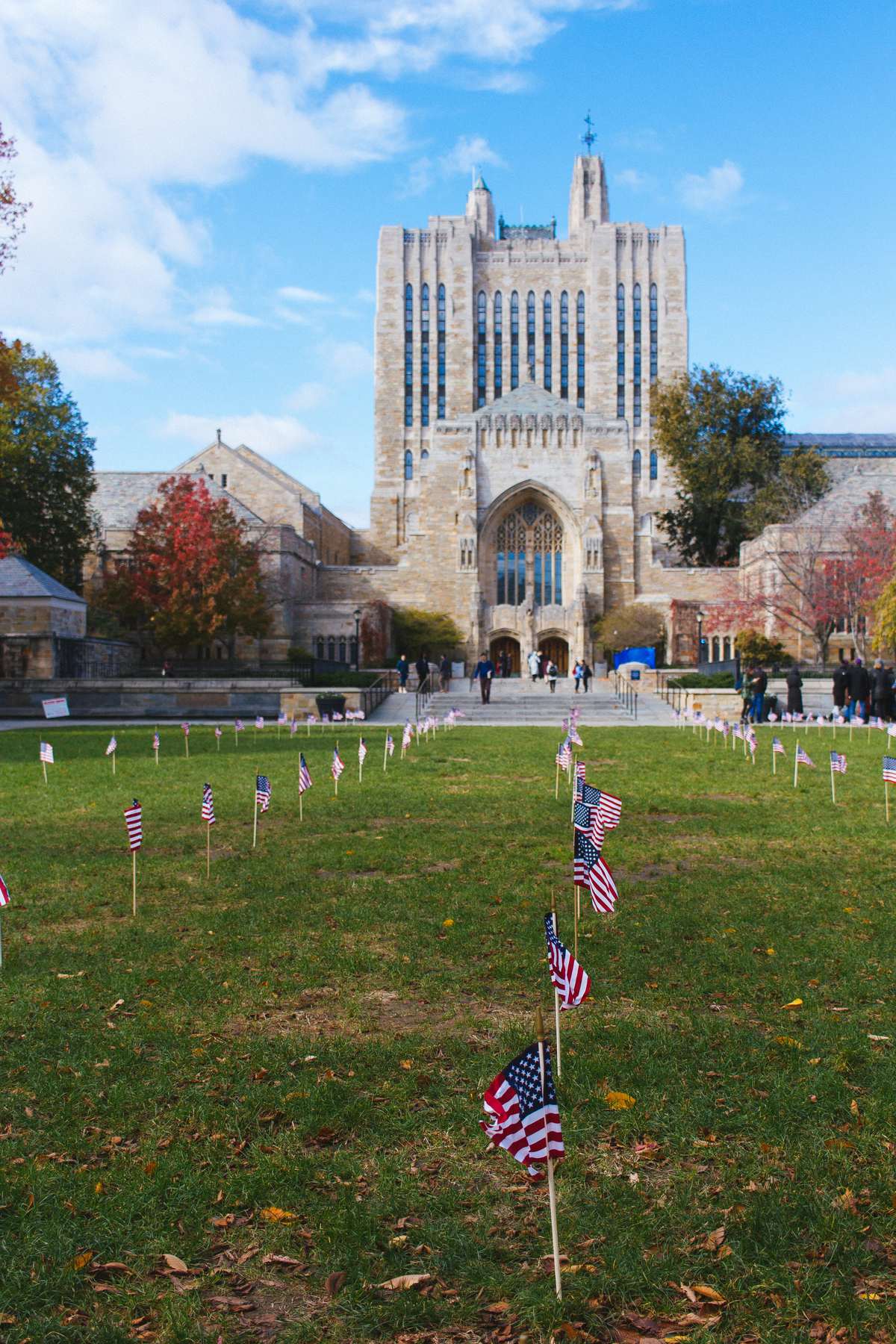Veteran students at Law School up 300 percent in five years
Yale honored veterans in the community as a record number of students have served in the military

Surbhi Bharadwaj, Senior Photographer
Yale students and faculty members gathered in Woolsey Hall on Friday Nov. 11 for a Veterans Day Ceremony honoring veterans within the community and nationwide.
This gathering was particularly well-attended by students at Yale Law School, where about one in 14 JD candidates in the class of 2025 have served in the military. Since 2017, the number of student veterans at YLS has increased by more than 300 percent, which the school attributes to increased recruiting efforts and lessened financial obstacles for veterans seeking graduate education.
“I’m extraordinarily proud to have so many veterans in our midst,” Heather Gerken, dean of YLS said at the ceremony. “Each has a remarkable story, and I’m inspired by their service to our country and this Law School. It is a privilege to work with them and to learn from them.”
In interviews with the News, two veterans within YLS agreed that there was a great sense of camaraderie and community among students who had served in the military.
They also remarked that there was somewhat of a divide between students who had served and those who had not, both due to age differences and the particular experiences associated with a military career.
“Many of us are just in a different phase of our life,” said Hillary Browning LAW ’25. “Many of the veterans are married or have very serious partners, and some of us have kids. So I think there is a bonding that happens naturally.”
Browning estimated that the average student in her 1L class was about 25 years old, whereas the oldest veteran in her class was in their late forties. Browning, who has a husband and kids of her own, first came to Yale as an Eli Whitney student in 2016.
Veterans at YLS span an age gap of their own, which in part has to do with a distinction between veterans who were enlisted soldiers – responsible for carrying out orders – and those who were military officers – responsible for planning missions and managing soldiers . Browning explained that within YLS, officers are overrepresented due to the increased burden for enlisted personnel who had to earn their undergraduate degrees as well as their JDs after ending their military careers.
“[YLS] also does a good job of recruiting both officers and enlisted [personnel],” said Devin Froseth LAW ’25, “A big priority for prior enlisted veterans is getting representation for enlisted service members as well.”
The increased number of veterans at YLS corresponds to an overarching trend in law school matriculation, whereby students increasingly take time off between receiving their undergraduate degrees and attending law school. Only 15 percent of the class of 2025 went to law school directly after college and 20 percent took more than five years off.
Browning explained that veterans and those with substantial prior work experience to YLS have different sensitivities than those who matriculated directly. By Browning’s estimation, students who had careers before law school — especially military careers — were more sensitive to hierarchies within the classroom.
“Something that makes the veterans antsy is when a teacher’s trying to get control of a room and everyone’s still talking with each other,” Browning said. “I think it really triggers something in veterans because we’re so used to hierarchy and respect of authority.”
In the last decade, it has become more financially viable for veterans to attend law school after their service due to the U.S. Defense Department’s Yellow Ribbon Reintegration Program. The program, which was founded in 2008, helps cover tuition for veterans that the G.I. bill doesn’t cover.
Froseth described YLS as highly sensitive to the financial needs of veterans, saying that he “didn’t have to do much work on [his] own” insofar as navigating the paperwork associated with the GI bill and the Yellow Ribbon Program.
“[YLS] has a really good relationship with the local Veterans Affairs Office,” Froseth said, “So they were able to answer all the questions I had and made it a really easy process for me.”
The substantial representation of veterans within the YLS student body trickles down into the school’s curricular offerings. One important intersection is the Veterans Legal Service Clinic, which works to assist in representing the legal needs of the approximately 250,000 veterans in the state of Connecticut.
On Veterans Day, clinic members attended a ceremony hosted by their frequent partner, National Veterans Council for Legal Redress, at the Vietnam Veterans Memorial Park at Long Wharf.
“I always appreciate taking the day to celebrate our clients’ service, reflect, and plan for the work to come,” wrote Meghan Brooks LAW ’19, clinical lecturer for the Veterans Legal Service Clinic.
The New Haven Vet Center is located at 291 South Lambert Rd.







